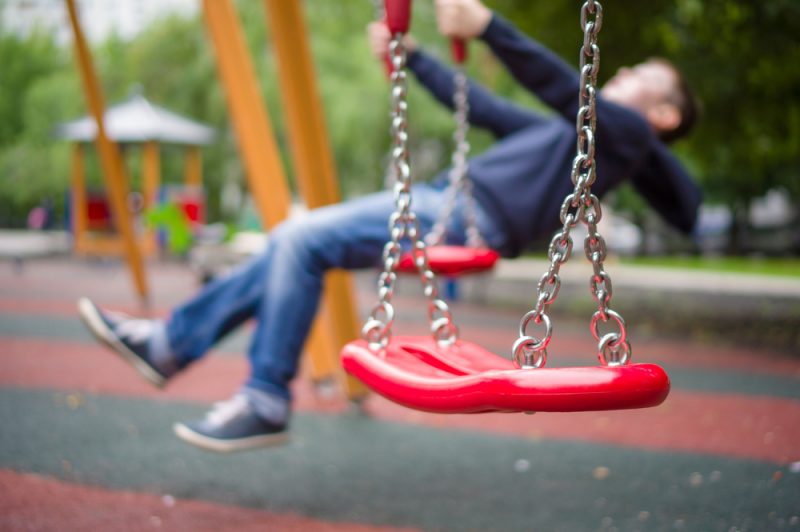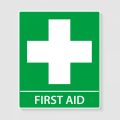Playgrounds are not to be missed when it comes to a childhood. They’re the place where we play, explore risks, socialise with others, and create memories that we will treasure long into adult life — but what happens when the risk becomes all too much?
Teaming up with Compost Direct, retailers of lawn top dressing and play bark, we have explored ways that playground safety can be addressed. We look specifically at the accident rates before offering tips to prevent injury and safeguard our children without limiting their play potential.
How do playgrounds look at the minute?
There hasn’t been a single study carried out that addresses the safety of all UK playgrounds. However, some studies have taken place that do shine some light on the safety of our playgrounds.
Play England conducted its own research which suggested that when you compare the dangers involved with playing in a playground to playing in a sport, the sport posed more harm to a child. For example, rugby has the highest non-fatal accident rate per 100,000 hours of exposure, with roughly 280 incidents. Football and hockey are the next most dangerous, with approximately 130 and 90 incidents, respectively. In comparison, public playgrounds have one of the lowest non-fatal accident rates at around 5 incidents per 100,000 hours of exposure.
When you hear the word playground, you might automatically think of a playground that has been designed and created by the council. However, hotels, restaurants and public houses are creating playgrounds as part of their businesses too, and this is where many accidents are reported. The Hampshire and Isle of Wight Health and Safety Advisory Group suggested that these accidents were due to incorrect design and layout, poor inspection and maintenance, unsuitable clothing and lack of adult supervision, amongst others.
Protecting young people in play areas
Councils, local businesses, parents, and guardians all have responsibilities to keep playgrounds safe.
What can councils and businesses do to improve safety?
Of course, children will be children and some accidents are completely unavoidable. Playground designers cannot be overly safety conscious when deciding how a playground should look or else the adventures and challenges that children enjoy in a play area will be eliminated. However, a well-designed playground will not raise any additional hazards for children and will encourage safe play.
When designing the layout of a playground, designers must ensure that the area is accessible — this is very important. Parents with pushchairs must be able to navigate around the park to watch their children, disabled people and children must be able to enjoy the area and emergency services must be able to reach the play zone in the case of an accident.
Another important factor in playground design is the materials that are used when creating surfaces. Hard surfaces should be non-slip, especially in rain and adverse weather conditions as this is a common cause of accidents. Impact-absorbing surfacing should be fitted around all apparatus to reduce injury level in the case of a fall. This could be in the form of play bark (bark chippings) or sand. Surfaces should be level too, with adequate opportunity for drainage to reduce risk of corrosion on any of the equipment.
Also, plenty of seats should be installed in a playground. This is so parent and guardians can monitor their children.
What can parents do to improve safety?
Supervise! This is the main thing that can reduce accidents in the playground.
Keep an eye out for who your child is playing with, for example, older children mixing with younger children might be a warning sign. In this situation, encourage your child to play on another piece of equipment and suggest to the appropriate authority that segregated areas could be beneficial. Keep an eye out for any litter too which may be harmful. For example, cigarette dumps, alcohol bottles or broken glass.
Another key thing to do is remind your child of the safety rules of the road. Although playgrounds should not be placed next to a road, often children can wander off and put themselves in a dangerous situation. It’s understandable that parents cannot watch their children at all times, so it is settling to know that your children are aware of the Green Cross Code if they come to a roadside.
Be hands-on when you spot a playground hazard. Make sure that you report the problem to the appropriate authorities to avoid any accidents for other children. Ask your children about their experiences too after they have been playing; they might have come across something that you did not notice.
https://www.basingstoke.gov.uk/content/page/29653/Safety%20guide%20for%20play%20areas.pdf
http://www.playengland.org.uk/media/172644/managing-risk-in-play-provision.pdf
http://www.fairplayforchildren.org/html/1200487206.html































No Comments
Leave a comment Cancel